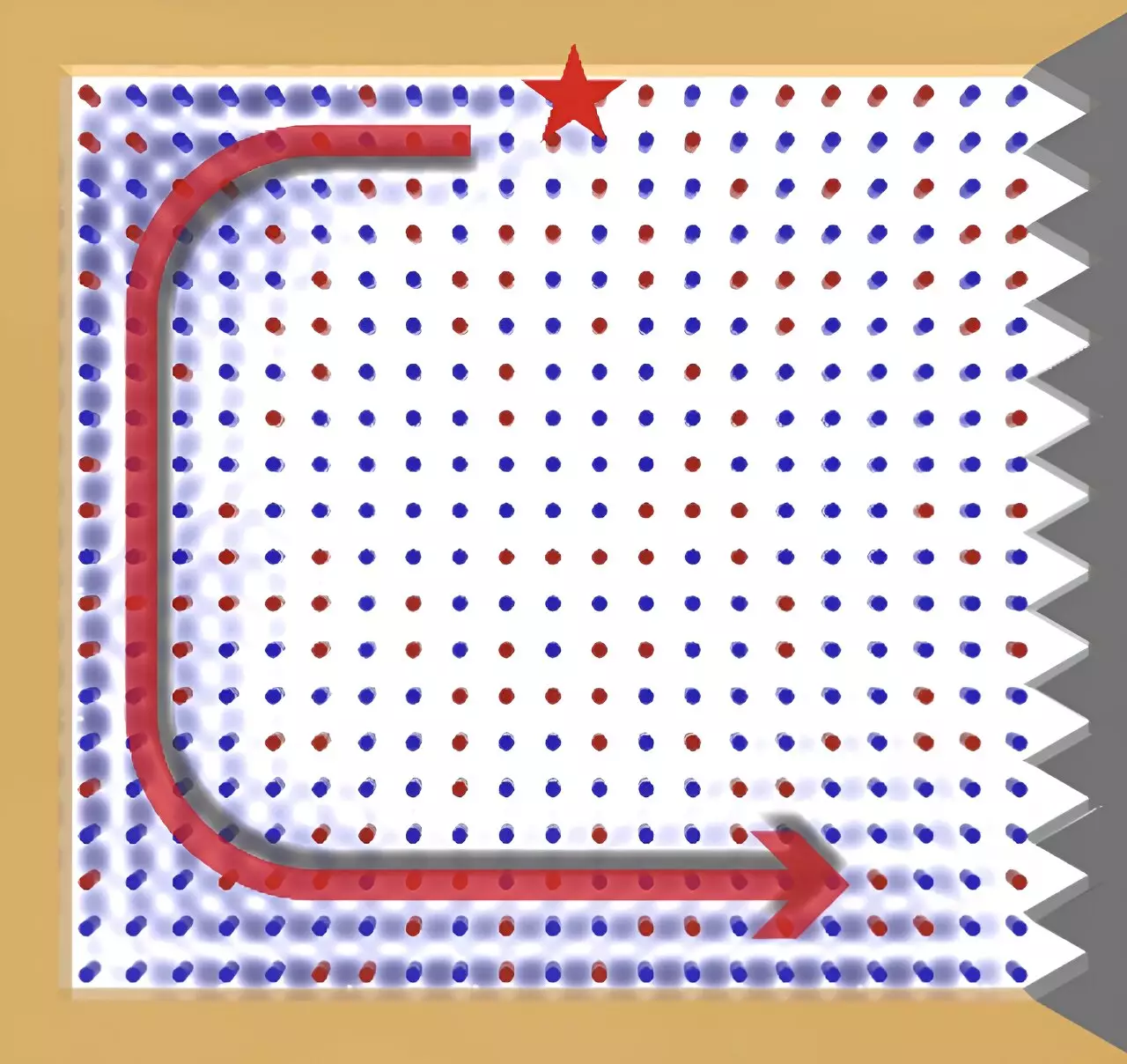Photonic alloys, a unique class of materials that combine two or more photonic crystals, show great potential for controlling the propagation of electromagnetic waves. However, a significant limitation of these materials is their tendency to reflect light back in the direction of its source, a phenomenon known as light backscattering. This issue hinders the efficient transmission of data and energy through these materials, affecting their overall performance as waveguides.
Researchers from Shanxi University and the Hong Kong University of Science and Technology have recently made a significant breakthrough in this field by developing a new type of photonic alloy with topological properties. This innovative material, featured in Physical Review Letters, allows for the propagation of microwaves without experiencing light backscattering. By combining nonmagnetized and magnetized rods in a nonperiodic 2D photonic crystal configuration, the researchers were able to create photonic alloys that support chiral edge states in the microwave regime.
The research team used yttrium iron garnet (YIG) rods and magnetized YIG rods to create their photonic alloy, implementing a vector network analyzer to establish connections between source and probe antennas within the sample. By strategically placing circular holes in a metal plate, the researchers were able to perform experiments aimed at characterizing the behavior of electromagnetic waves in the material. The use of a metal cladding with a Chern number of zero, covering a photonic topological insulator with a Chern number of 1, led to the emergence of a topological edge state at the boundary, in accordance with the principle of bulk-edge correspondence.
The study’s findings revealed that the topological photonic alloy could exhibit topological properties even with a low doping concentration of magnetized rods, without the need for order in the material. This discovery opens up new possibilities for the experimental realization of topological edge states, suggesting that chiral edge states can be generated without breaking time reversal symmetry throughout the crystal. Moving forward, the researchers plan to explore multicomponent topological photonic alloy systems to leverage a greater number of degrees of freedom and enable the manipulation of different parameters for a wider range of effects.
Looking ahead, the research team aims to extend their recent findings to the optical domain, presenting exciting opportunities for manipulating light and developing cutting-edge photonic devices. By exploring the possibility of realizing similar phenomena in optical frequencies, the researchers hope to further advance the field of photonics and uncover new applications for their groundbreaking discoveries.
The development of topological photonic alloys represents a significant advancement in the quest for efficient waveguides that can control the propagation of electromagnetic waves with minimal backscattering. With further research and exploration of optical frequencies, the potential applications of these materials could revolutionize the field of photonics and pave the way for innovative technologies in the future.


Leave a Reply